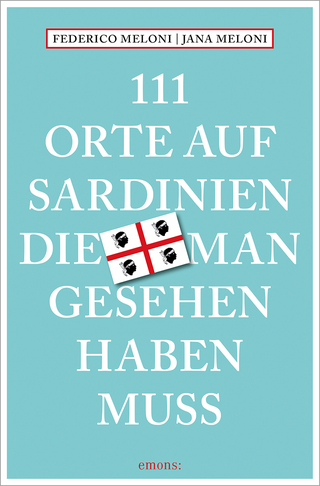
Rome from the Ground Up
Seiten
2006
The Belknap Press (Verlag)
978-0-674-02263-8 (ISBN)
The Belknap Press (Verlag)
978-0-674-02263-8 (ISBN)
Rome is not one city but many, each with its own history unfolding from a different center. Beginning with the shaping of the ground on which Rome first rose, this book conjures all these cities, conducting the reader through time and space to the complex and shifting realities—architectural, historical, political, and social—that constitute Rome.
Rome is not one city but many, each with its own history unfolding from a different center: now the trading port on the Tiber; now the Forum of antiquity; the Palatine of imperial power; the Lateran Church of Christian ascendancy; the Vatican; the Quirinal palace. Beginning with the very shaping of the ground on which Rome first rose, this book conjures all these cities, past and present, conducting the reader through time and space to the complex and shifting realities--architectural, historical, political, and social--that constitute Rome.
A multifaceted historical portrait, this richly illustrated work is as gritty as it is gorgeous, immersing readers in the practical world of each period. James McGregor's explorations afford the pleasures of a novel thick with characters and plot twists: amid the life struggles, hopes, and failures of countless generations, we see how things truly worked, then and now; we learn about the materials of which Rome was built; of the Tiber and its bridges; of roads, aqueducts, and sewers; and, always, of power, especially the power to shape the city and imprint it with a particular personality--like that of Nero or Trajan or Pope Sixtus V--or a particular institution.
McGregor traces the successive urban forms that rulers have imposed, from emperors and popes to national governments including Mussolini's. And, in archaeologists' and museums' presentation of Rome's past, he shows that the documenting of history itself is fraught with power and politics. In McGregor's own beautifully written account, the power and politics emerge clearly, manifest in the distinctive styles and structures, practical concerns and aesthetic interests that constitute the myriad Romes of our day and days past.
Rome is not one city but many, each with its own history unfolding from a different center: now the trading port on the Tiber; now the Forum of antiquity; the Palatine of imperial power; the Lateran Church of Christian ascendancy; the Vatican; the Quirinal palace. Beginning with the very shaping of the ground on which Rome first rose, this book conjures all these cities, past and present, conducting the reader through time and space to the complex and shifting realities--architectural, historical, political, and social--that constitute Rome.
A multifaceted historical portrait, this richly illustrated work is as gritty as it is gorgeous, immersing readers in the practical world of each period. James McGregor's explorations afford the pleasures of a novel thick with characters and plot twists: amid the life struggles, hopes, and failures of countless generations, we see how things truly worked, then and now; we learn about the materials of which Rome was built; of the Tiber and its bridges; of roads, aqueducts, and sewers; and, always, of power, especially the power to shape the city and imprint it with a particular personality--like that of Nero or Trajan or Pope Sixtus V--or a particular institution.
McGregor traces the successive urban forms that rulers have imposed, from emperors and popes to national governments including Mussolini's. And, in archaeologists' and museums' presentation of Rome's past, he shows that the documenting of history itself is fraught with power and politics. In McGregor's own beautifully written account, the power and politics emerge clearly, manifest in the distinctive styles and structures, practical concerns and aesthetic interests that constitute the myriad Romes of our day and days past.
James H. S. McGregor is Emeritus Professor of Comparative Literature at the University of Georgia.
Introduction 1. Tiber Island and the Ancient Port 2. The Roman Forum 3. The Imperial City 4. Early Christian Churches 5. Vatican Revival 6. Renaissance in the River Bend 7. Baroque Expansion 8. The Survival of History Information Further Reading Acknowledgments Illustration Credits Index
| Erscheint lt. Verlag | 30.11.2006 |
|---|---|
| Reihe/Serie | From the Ground Up |
| Zusatzinfo | 100 color illustrations, 30 halftones, 10 maps |
| Verlagsort | Cambridge, Mass. |
| Sprache | englisch |
| Maße | 146 x 229 mm |
| Gewicht | 953 g |
| Themenwelt | Sachbuch/Ratgeber ► Geschichte / Politik ► Regional- / Landesgeschichte |
| Reiseführer ► Europa ► Italien | |
| ISBN-10 | 0-674-02263-7 / 0674022637 |
| ISBN-13 | 978-0-674-02263-8 / 9780674022638 |
| Zustand | Neuware |
| Informationen gemäß Produktsicherheitsverordnung (GPSR) | |
| Haben Sie eine Frage zum Produkt? |
Mehr entdecken
aus dem Bereich
aus dem Bereich
individuell reisen mit vielen praktischen Tipps
Buch | Softcover (2024)
Michael Müller (Verlag)
28,90 €


